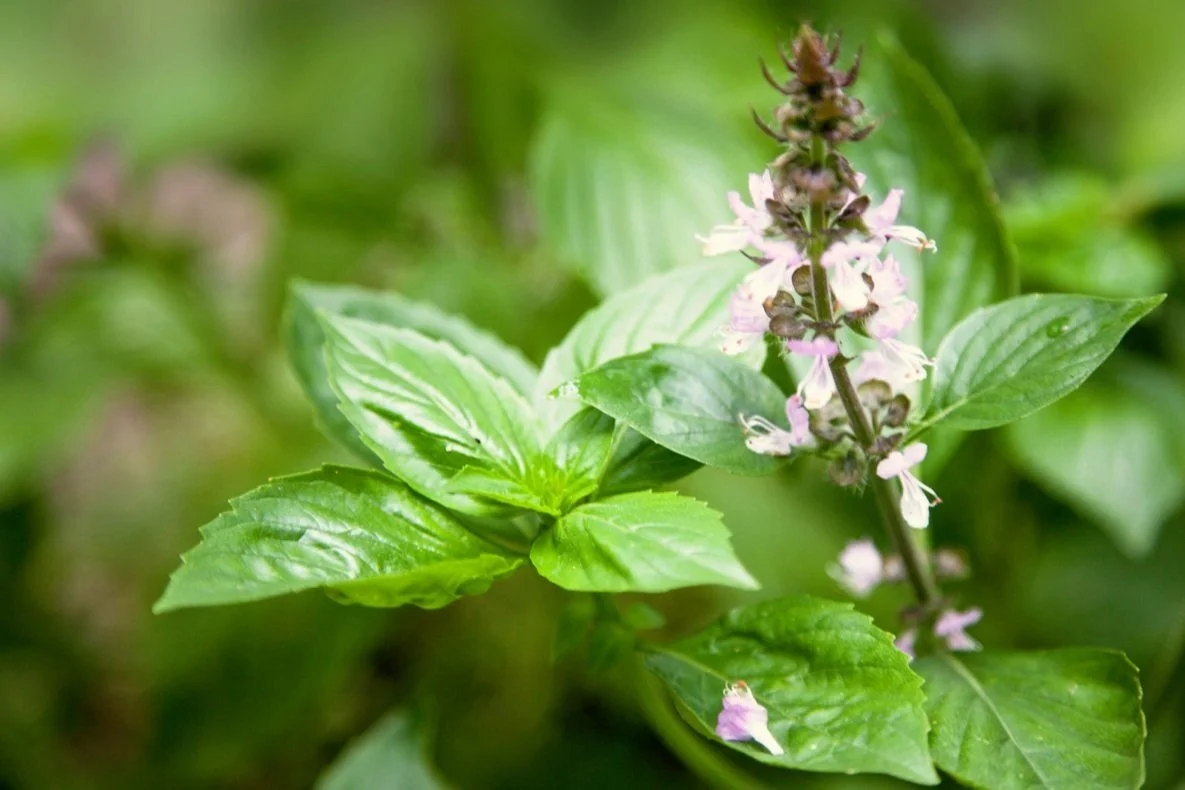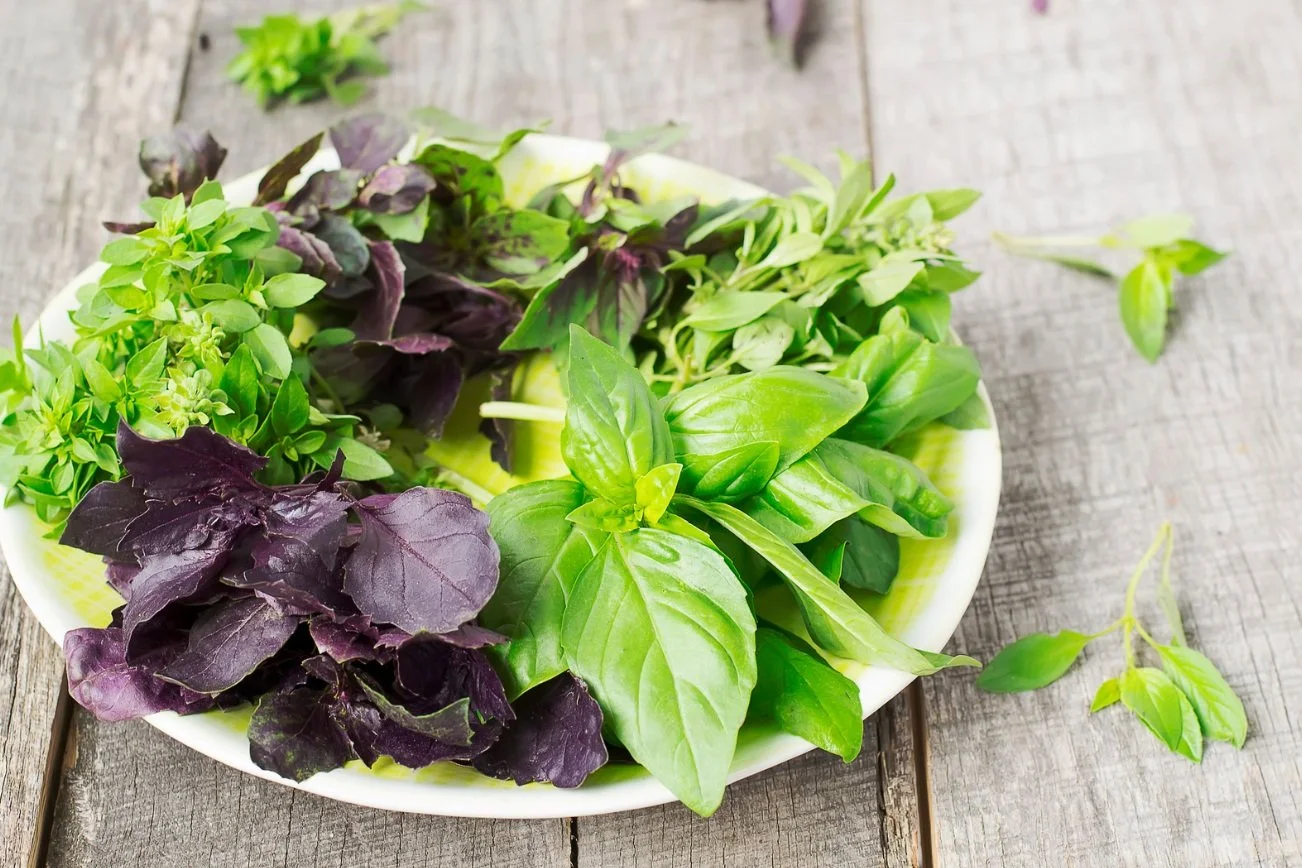My Most Favorite Basil
Basil is a member of the Lamiaceae plant family (which is the mint family) and is super versatile. You can use it in practically anything, although most of us think classic Italian when it comes to basil.
Basil was first discovered in India more than 5,000 years ago and many different cultures have used basil not only as a culinary herb but as a medicinal one. Basil contains some really powerful essential oils that have enzyme inhibiting properties to help lower inflammation. Basil also contains vitamins A and K, iron, manganese and calcium. And it may be useful in protecting your skin from some of the effects of aging!
A while back, I wrote a blog post about basil called “How About Some Bossy Basil?” and it has loads of info on planting, growing and harvesting this awesome herb. But since there are more than 25 varieties of basil that are pretty easy to find, it can be a little daunting to choose one (or 2 or 3) for your garden - LOL. So in this post, I’m gonna share with you my top 4 favorite varieties - why I love them and how I use them.
1. Genovese Basil
First up is Genovese Basil. This variety of Basil is an heirloom variety and is often referred to as Italian Basil. It’s named Genovese after the city of Genoa in Italy. Genovese Basil has large, glossy, dark green leaves that are flat and rounded at the tip. I love Genovese Basil because its flavor and smell is much stronger and more powerful than sweet basil. While both types of basil are a little peppery, Genovese Basil has a more robust pepper taste with a combination of cloves and mint. This makes it really great for pesto and in fresh salads. Try my recipe for Basil Pesto and serve it over fresh pasta with crunchy bread.
2. Mrs. Burns’ Lemon Basil
Next there’s my favorite lemon basil - Mrs. Burns’ Lemon Basil. This Basil has got a really bright, clean, citrusy flavor that is much more intense that your standard lemon basil. It’s leaves are larger and it grows bigger and faster than other lemon basils. Mrs. Burns’ Lemon Basil is an heirloom variety that was first found in a New Mexico garden. Seeds were passed down to the Burns’ family and incorporated into the Native Seeds/SEARCH registry by Barney Burns (one of the registry’s founders). Mrs. Burns’ Lemon Basil is the perfect fresh herb for rice, fish and chicken dishes. You can also use it in salad dressings or for some lemony basil iced tea. And I love to let this Basil flower so I can cut its long stems, add them to a vase of zinnias and dahlias, and create a really pretty floral arrangement.
3. Thai Basil
Thai Basil is perfect for all your Asian dishes. It’s sweet and spicy with just a hint of anise (i.e., licorice). It’s becoming increasingly popular in American markets and can usually be found in your local farmers’ market. Thai Basil takes heat pretty well and doesn’t wilt when cooked quite as much as some other basil varieties. And have you ever added Thai Basil leaves to your favorite cocktail? Try muddling a few Thai Basil leaves with gin, lemon juice, simple syrup and tonic for a spicy take on the traditional gin and tonic. Or swap out the gin for vodka and the lemon juice for cucumber. Leave out the tonic and use a shaker for a Thai Basil cucumber martini that’s shaken . . . not stirred.
4. Cinnamon Basil
Last - but definitely not least - is Cinnamon Basil. Cinnamon Basil is sometimes called Mexican Basil, but it definitely tastes like cinnamon. Cinnamon Basil has dark green leaves, violet stems and lavender/purple flowers - which also make it a really interesting addition to a vase of flowers. Cinnamon Basil contains cinnamate which is the compound that gives this particular basil variety its cinnamon flavor. Because of its cinnamon spiciness, Cinnamon Basil can be added to fruit salads, desserts and hot teas. And if you like mojitos - substitute Cinnamon Basil for the mint (same plant family, remember) and you’ll have created a brand new drink!
So now you’ve got 4 different varieties of basil that you can plant in your garden - each with different flavors and uses. Most of the time, you can find all 4 in my garden. And remember - there are tons of varieties out there that you can try. These just happen to be mine.
And if you’re curious about other herbs that have both culinary and medicinal uses, grab my FREE downloadable PDF guide to 24 Inflammation Fighting Foods You Can Grow Yourself.
Happy Gardening!






